
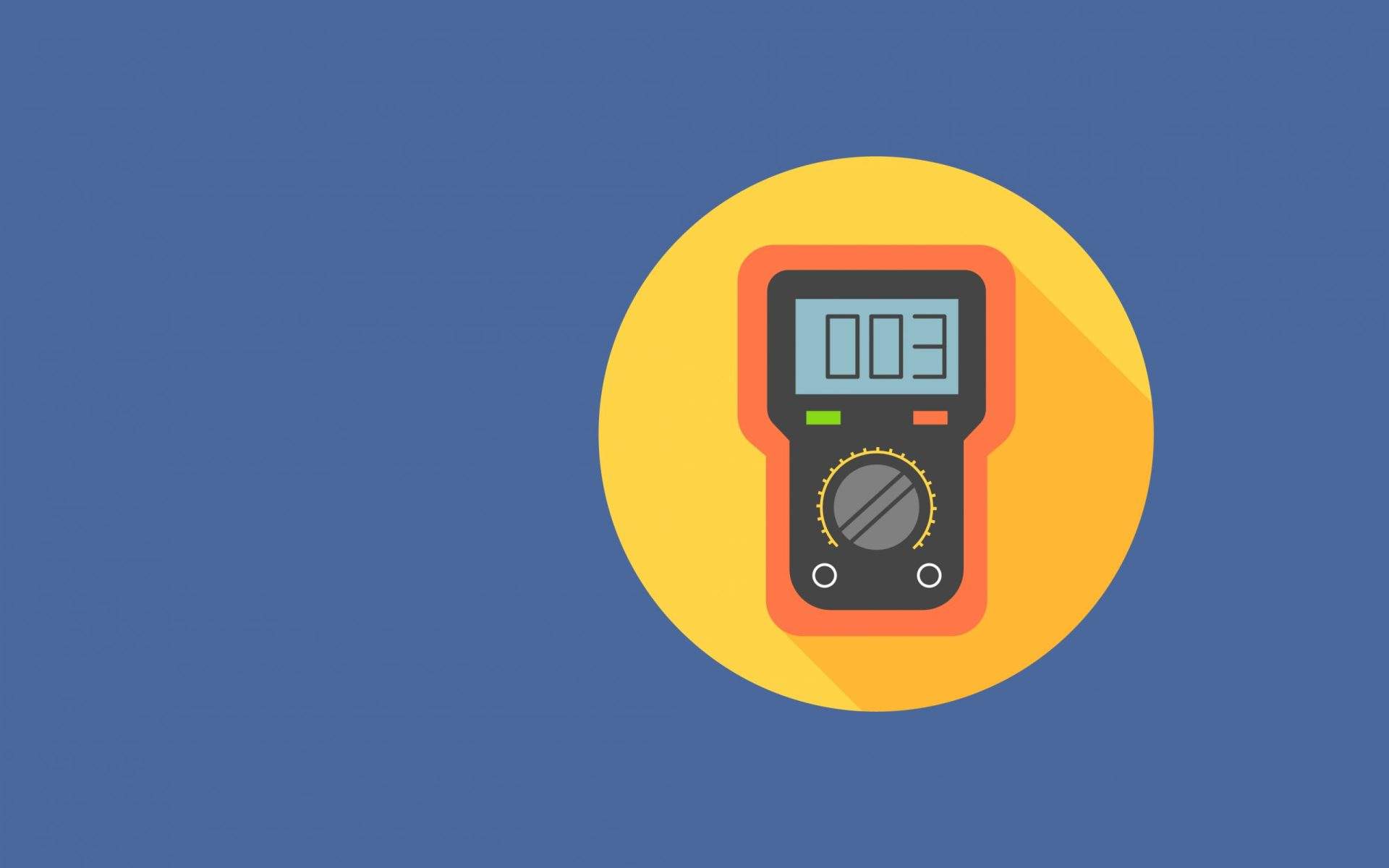
As an Amazon Associate Conductscience Inc earns revenue from qualifying purchases
Multimeters or multitesters are versatile electrical tools utilized by engineers and electronic technicians to test and troubleshoot household wiring, batteries, electric motors, power supplies, HVAC systems, and other equipment. Note that multimeters act as ammeters, voltmeters, and ohmmeters with high resolution of milliunits; therefore, they are also known as volt-ohm-milliammeters (VOMs). Additionally, multimeters have different functionalities, and specialized features, such as diode testing and true root mean square (RMS) capabilities.
Interestingly, multimeters were invented in the 1920s as radio receivers and were initially called Avometers – an invention credited to the British engineer Donald Macadie. Now there are three main types of multimeters: analog units that have moving pointers, digital models with easy to read displays, and Fluke meters. Note that Fluke meters, firstly introduced in 1977, can be more costly than other products as they have sophisticated functions and are protected against transient voltage and damage.
Given the wide applications of multimeters across different commercial, industrial, and household settings, it’s no surprise that multimeters are in-demand products. Prospective buyers should consider three major factors:
Requirements: Depending on the type of work, users can choose between benchtop and handheld models. Note that although benchtop models provide some superior methods for reading resistance and other parameters, modern handheld models are equally powerful and convenient, especially for field measurements. Another decision users should make is between analog and digital models. Note that although digital models might take some time to stabilize, they are highly accurate and easy to read, which makes them preferred units among specialists and do-it-yourself enthusiasts. Furthermore, users should look for units with good response times. If the response time is slow, measurements can become confusing.
Specifications: Accuracy, precision, resolution, and range are all essential specifications to consider. For example, accuracy is a vital factor to look for when choosing a multimeter, which usually requires a comparison to an industry standard. We should mention that some applications, such as automotive, medical, or other specialized settings, require higher accuracy (0.025%, 0.5%, etc.), with regular calibration being essential in achieving accurate readings. When it comes to the resolution capabilities of any digital unit (or the smallest change a tool can detect), we should mention that multimeters can employ counts or digits; higher counts and digits provide higher resolution. Some brands like Fluke, for instance, produce 3 ½ multimeters with counts of up to 6,000, as well as 4 ½ units with counts of 20,000 or 50,000. Last but not least, safety categories (e.g., CAT III) are fundamental factors to guarantee long and secure use.
Total costs: Depending on the design, size, specialized parameters, brand popularity, and safety ratings, costs can vary significantly. Note that although multimeters are designed to measure current, voltage, and resistance, some units have additional measuring capabilities, such as capacitance, continuity, diode testing, input resistance, true RMS, auto-hold functions, auto-ranging, and long battery life (of above 1,000 hours). Other additional features may include low pass filter, low impedance mode to prevent ghost and induced voltages during readings, data logging for better documentation, USB interface, and a graphic display for real-time measurements. As mentioned above, some high-quality products and Fluke multimeters are most costly than meters for general applications. Lastly, accessories, such as probes and neck lanyards, can add to the final cost of a unit.
Having the right combination of tools can facilitate readings and troubleshooting, so having one instrument that combines the different measurement functions of single-task meters is essential in a variety of settings, such as environmental applications, true RMS AC current measurements, DC average measurements, industrial settings, commercial systems, and home use. With a variety of units and brands on the market, however, choosing a multimeter can be a challenging task. Based on different specifications and user reviews, here are the best multimeters for sale.
Fluke 116 HVAC Multimeter is a powerful 6,000-count digital multimeter ideal for HVAC applications. The unit can measure different parameters, such as resistance, continuity, frequency, diodes, and capacitance. Additionally, there’s low impedance functionality for accurate readings, as well as temperature and microamp measuring capabilities to test flame sensors. Note that the unit has a large display and LED backlight to improve usability and readability even in dim conditions. With true RMS functionality, auto-ranging functions, convenient design for one-handed operation, and CAT III 600 V safety ratings, Fluke 116 is one of the most powerful multimeters for sale.
Fluke 117 Multimeter is another powerful multimeter designed for busy settings, such as educational institutions, commercial buildings, and hospitals. The unit can measure different parameters, such as resistance, continuity, capacitance, and frequency. Note that it has VoltAlert technology for non-contact voltage detection and AutoVolt automatic AC/DC voltage selection. Also, the unit provides true RMS readings regarding non-linear loads. Note that this CAT III 600 V safety rated meter has an ergonomic design and is compatible with magnetic hangers (ToolPa TM) for hands-free operation, which makes it a popular tool among specialists.
AstroAI Digital Multimeter is a versatile meter that can perform a wide range of tests for voltage, current, resistance, continuity, capacitance, and frequency. It can also test diodes and temperature. Additionally, the unit features auto-ranging and true RMS capabilities, as well as data hold and auto shut-off options. With its convenient design and overload protection (including built-in F400mA/600V and F10A/600V explosion-proof ceramic fuse tubes), this multimeter is ideal for long workdays and heavy-duty applications.
Innova 3320 Auto-Ranging Digital Multimeter is a great UL certified meter ideal for troubleshooting household and automotive problems (with 10 MegOhm input). The unit has a single-setting resistance function for AC/DC voltage and color-coded LEDs that make checking household batteries an easy task even for entry-level users. Besides, it comes with all the leads and holders needed for accurate use and hands-free testing, as well as protective rubber corner guards for drop protection. With its auto-ranging capabilities and different functions, this multimeter is a great choice for both professionals and do-it-yourself enthusiasts.
Craftsman 34-82141 Digital Multimeter is another wonderful multimeter available on the market. The unit can measure up to 600 V AC/DC and 10 A AC/DC, as well as resistance and diodes. With its large 2,000-count display, automatic shut-off function, and durable design, this meter is ideal for home maintenance, PC repair, and different applications. Note that the unit comes with a rugged case for safe and long use.
Tenma 72-1055 Benchtop Digital Multimeter is a powerful 1,999-count benchtop model that can measure AC/DC voltage, current, resistance, capacitance, frequency, transistor hFE, and temperature. It can also perform diode and audible continuity testing. With a backlit display and a variety of settings, this unit is ideal for different educational and commercial settings, including fieldwork. Note that the set comes with various beneficial accessories, such as test leads, alligator clips, and temperature probes, which make it highly convenient.
B&K Precision 5491B Multimeter is a sophisticated true RMS benchtop model. The unit can measure voltage, current, frequency, period, continuity, and diodes with a precision of 0.02%. Its dual LCD display provides two readings at once and a 50,000-count resolution. Moreover, this powerful meter features USB connectivity and RS-232 computer interface, allowing storage and remote analysis of data. Note that the unit meets the IEC safety standard 61010 and is certified for Category I of 1,000 V and Category II of 300 V, which makes it a valuable tool in a variety of applications.
Keithley DMM6500 6½-Digit Touchscreen Multimeter is one of the most advanced benchtop multimeters for sale. The unit is able to capture low-level signals, low resistances with impressive sensitivity, as well as transients and ultra-low sleep currents, and quiescent currents. Note that the unit’s accuracy is as follows: DC V: +/-0.0025%; AC V: +/-0.05%; DC current: +/-0.02%; AC current: +/-0.1%; Resistance: +/-0.0075%; Temperature: +/-0.7⁰C. With its touch-and-zoom capabilities and impressive connectivity, this unit ensures great readability and user comfort.
Cen-Tech 7-Function Digital Multimeter is a popular multimeter that provides accurate readings for voltage, current, resistance, transistors, diodes, and batteries. We should mention that the unit has various additional functions, including a low battery indicator. One of the most tempting aspects is its affordable price, which makes it a preferred tool among beginners and do-it-yourself enthusiasts.
Etekcity MSR-R500 Digital Multimeter is another affordable multimeter that can measure parameters, such as AC/DC voltage, DC current, resistance, diode, and continuity. We should note that the unit is not designed for AC current. Additionally, this meter has a data hold button and a large backlit LCD display. With a variety of settings and high safety protection, Etekcity MSR-R500 is ideal for different electrical projects.
Before using a multimeter, users should keep in mind that working with electrical equipment requires high safety precautions. Instruments should meet different safety standards, such as the International Electrotechnical Commission (IEC) safety standards.
Multimeters are beneficial electrical tools employed in a variety of industrial, commercial, and home settings. As explained above, multimeters act as ammeters, voltmeters, and ohmmeters with different specialized features. Note that there are three main types of multimeters used to troubleshoot household wiring, batteries, electric motors, HVAC systems, and other equipment: analog units with moving pointers, digital models with easy to read displays, and Fluke meters.
Before choosing a multimeter, users should consider three major factors: requirements, specifications, and total costs. Accuracy, precision, resolution, and range are all essential parameters to consider. Extra measuring capabilities, such as capacitance, continuity, input resistance, true RMS, and auto-ranging functions, are also vital. That being said, one of the most important aspects to consider is safety. As working with electrical systems can be dangerous, units should meet different safety categories (e.g., CAT III) to guarantee long and secure use. In the end, as electricity is all around, multimeters are highly beneficial and in-demand instruments.
In behavioral neuroscience, the Open Field Test (OFT) remains one of the most widely used assays to evaluate rodent models of affect, cognition, and motivation. It provides a non-invasive framework for examining how animals respond to novelty, stress, and pharmacological or environmental manipulations. Among the test’s core metrics, the percentage of time spent in the center zone offers a uniquely normalized and sensitive measure of an animal’s emotional reactivity and willingness to engage with a potentially risky environment.
This metric is calculated as the proportion of time spent in the central area of the arena—typically the inner 25%—relative to the entire session duration. By normalizing this value, researchers gain a behaviorally informative variable that is resilient to fluctuations in session length or overall movement levels. This makes it especially valuable in comparative analyses, longitudinal monitoring, and cross-model validation.
Unlike raw center duration, which can be affected by trial design inconsistencies, the percentage-based measure enables clearer comparisons across animals, treatments, and conditions. It plays a key role in identifying trait anxiety, avoidance behavior, risk-taking tendencies, and environmental adaptation, making it indispensable in both basic and translational research contexts.
Whereas simple center duration provides absolute time, the percentage-based metric introduces greater interpretability and reproducibility, especially when comparing different animal models, treatment conditions, or experimental setups. It is particularly effective for quantifying avoidance behaviors, risk assessment strategies, and trait anxiety profiles in both acute and longitudinal designs.
This metric reflects the relative amount of time an animal chooses to spend in the open, exposed portion of the arena—typically defined as the inner 25% of a square or circular enclosure. Because rodents innately prefer the periphery (thigmotaxis), time in the center is inversely associated with anxiety-like behavior. As such, this percentage is considered a sensitive, normalized index of:
Critically, because this metric is normalized by session duration, it accommodates variability in activity levels or testing conditions. This makes it especially suitable for comparing across individuals, treatment groups, or timepoints in longitudinal studies.
A high percentage of center time indicates reduced anxiety, increased novelty-seeking, or pharmacological modulation (e.g., anxiolysis). Conversely, a low percentage suggests emotional inhibition, behavioral avoidance, or contextual hypervigilance. reduced anxiety, increased novelty-seeking, or pharmacological modulation (e.g., anxiolysis). Conversely, a low percentage suggests emotional inhibition, behavioral avoidance, or contextual hypervigilance.
The percentage of center time is one of the most direct, unconditioned readouts of anxiety-like behavior in rodents. It is frequently reduced in models of PTSD, chronic stress, or early-life adversity, where animals exhibit persistent avoidance of the center due to heightened emotional reactivity. This metric can also distinguish between acute anxiety responses and enduring trait anxiety, especially in longitudinal or developmental studies. Its normalized nature makes it ideal for comparing across cohorts with variable locomotor profiles, helping researchers detect true affective changes rather than activity-based confounds.
Rodents that spend more time in the center zone typically exhibit broader and more flexible exploration strategies. This behavior reflects not only reduced anxiety but also cognitive engagement and environmental curiosity. High center percentage is associated with robust spatial learning, attentional scanning, and memory encoding functions, supported by coordinated activation in the prefrontal cortex, hippocampus, and basal forebrain. In contrast, reduced center engagement may signal spatial rigidity, attentional narrowing, or cognitive withdrawal, particularly in models of neurodegeneration or aging.
The open field test remains one of the most widely accepted platforms for testing anxiolytic and psychotropic drugs. The percentage of center time reliably increases following administration of anxiolytic agents such as benzodiazepines, SSRIs, and GABA-A receptor agonists. This metric serves as a sensitive and reproducible endpoint in preclinical dose-finding studies, mechanistic pharmacology, and compound screening pipelines. It also aids in differentiating true anxiolytic effects from sedation or motor suppression by integrating with other behavioral parameters like distance traveled and entry count (Prut & Belzung, 2003).
Sex-based differences in emotional regulation often manifest in open field behavior, with female rodents generally exhibiting higher variability in center zone metrics due to hormonal cycling. For example, estrogen has been shown to facilitate exploratory behavior and increase center occupancy, while progesterone and stress-induced corticosterone often reduce it. Studies involving gonadectomy, hormone replacement, or sex-specific genetic knockouts use this metric to quantify the impact of endocrine factors on anxiety and exploratory behavior. As such, it remains a vital tool for dissecting sex-dependent neurobehavioral dynamics.
The percentage of center time is one of the most direct, unconditioned readouts of anxiety-like behavior in rodents. It is frequently reduced in models of PTSD, chronic stress, or early-life adversity. Because it is normalized, this metric is especially helpful for distinguishing between genuine avoidance and low general activity.
Environmental Control: Uniformity in environmental conditions is essential. Lighting should be evenly diffused to avoid shadow bias, and noise should be minimized to prevent stress-induced variability. The arena must be cleaned between trials using odor-neutral solutions to eliminate scent trails or pheromone cues that may affect zone preference. Any variation in these conditions can introduce systematic bias in center zone behavior. Use consistent definitions of the center zone (commonly 25% of total area) to allow valid comparisons. Software-based segmentation enhances spatial precision.
Evaluating how center time evolves across the duration of a session—divided into early, middle, and late thirds—provides insight into behavioral transitions and adaptive responses. Animals may begin by avoiding the center, only to gradually increase center time as they habituate to the environment. Conversely, persistently low center time across the session can signal prolonged anxiety, fear generalization, or a trait-like avoidance phenotype.
To validate the significance of center time percentage, it should be examined alongside results from other anxiety-related tests such as the Elevated Plus Maze, Light-Dark Box, or Novelty Suppressed Feeding. Concordance across paradigms supports the reliability of center time as a trait marker, while discordance may indicate task-specific reactivity or behavioral dissociation.
When paired with high-resolution scoring of behavioral events such as rearing, grooming, defecation, or immobility, center time offers a richer view of the animal’s internal state. For example, an animal that spends substantial time in the center while grooming may be coping with mild stress, while another that remains immobile in the periphery may be experiencing more severe anxiety. Microstructure analysis aids in decoding the complexity behind spatial behavior.
Animals naturally vary in their exploratory style. By analyzing percentage of center time across subjects, researchers can identify behavioral subgroups—such as consistently bold individuals who frequently explore the center versus cautious animals that remain along the periphery. These classifications can be used to examine predictors of drug response, resilience to stress, or vulnerability to neuropsychiatric disorders.
In studies with large cohorts or multiple behavioral variables, machine learning techniques such as hierarchical clustering or principal component analysis can incorporate center time percentage to discover novel phenotypic groupings. These data-driven approaches help uncover latent dimensions of behavior that may not be visible through univariate analyses alone.
Total locomotion helps contextualize center time. Low percentage values in animals with minimal movement may reflect sedation or fatigue, while similar values in high-mobility subjects suggest deliberate avoidance. This metric helps distinguish emotional versus motor causes of low center engagement.
This measure indicates how often the animal initiates exploration of the center zone. When combined with percentage of time, it differentiates between frequent but brief visits (indicative of anxiety or impulsivity) versus fewer but sustained center engagements (suggesting comfort and behavioral confidence).
The delay before the first center entry reflects initial threat appraisal. Longer latencies may be associated with heightened fear or low motivation, while shorter latencies are typically linked to exploratory drive or low anxiety.
Time spent hugging the walls offers a spatial counterbalance to center metrics. High thigmotaxis and low center time jointly support an interpretation of strong avoidance behavior. This inverse relationship helps triangulate affective and motivational states.
By expressing center zone activity as a proportion of total trial time, researchers gain a metric that is resistant to session variability and more readily comparable across time, treatment, and model conditions. This normalized measure enhances reproducibility and statistical power, particularly in multi-cohort or cross-laboratory designs.
For experimental designs aimed at assessing anxiety, exploratory strategy, or affective state, the percentage of time spent in the center offers one of the most robust and interpretable measures available in the Open Field Test.
Written by researchers, for researchers — powered by Conduct Science.



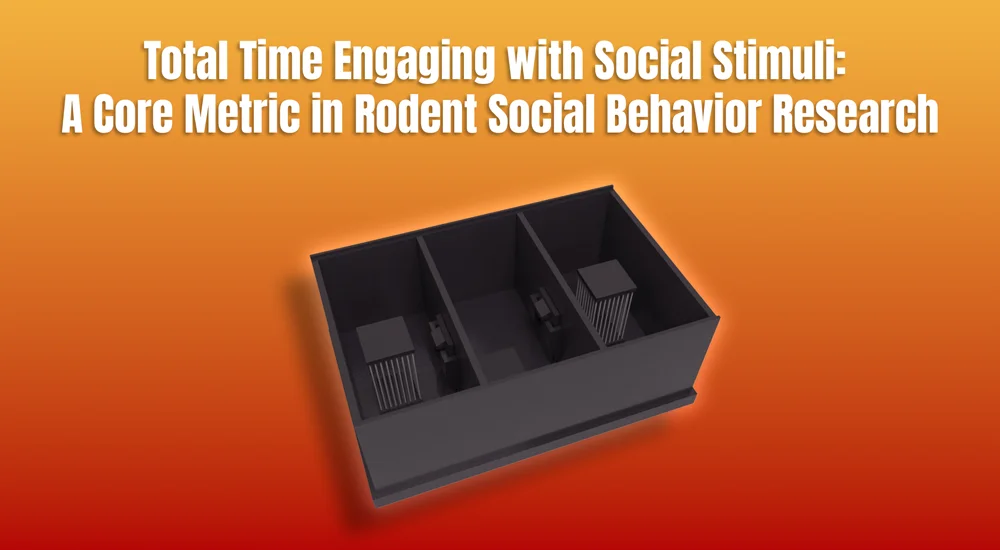
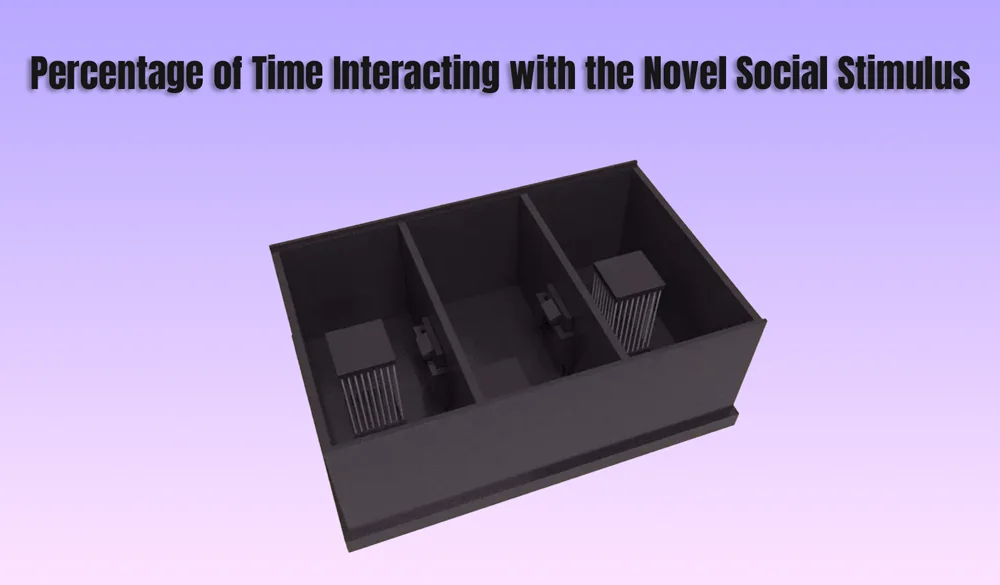
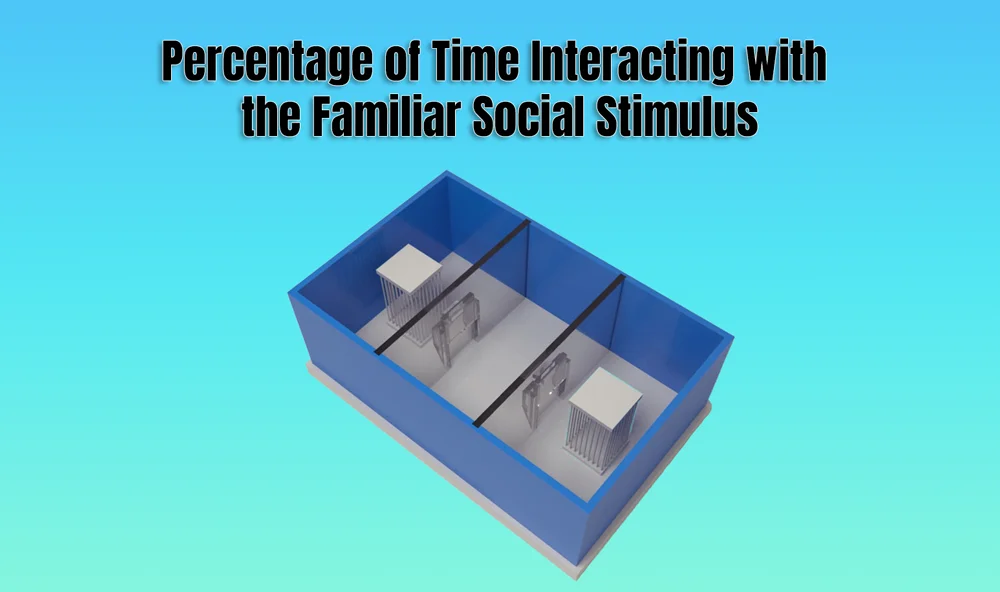

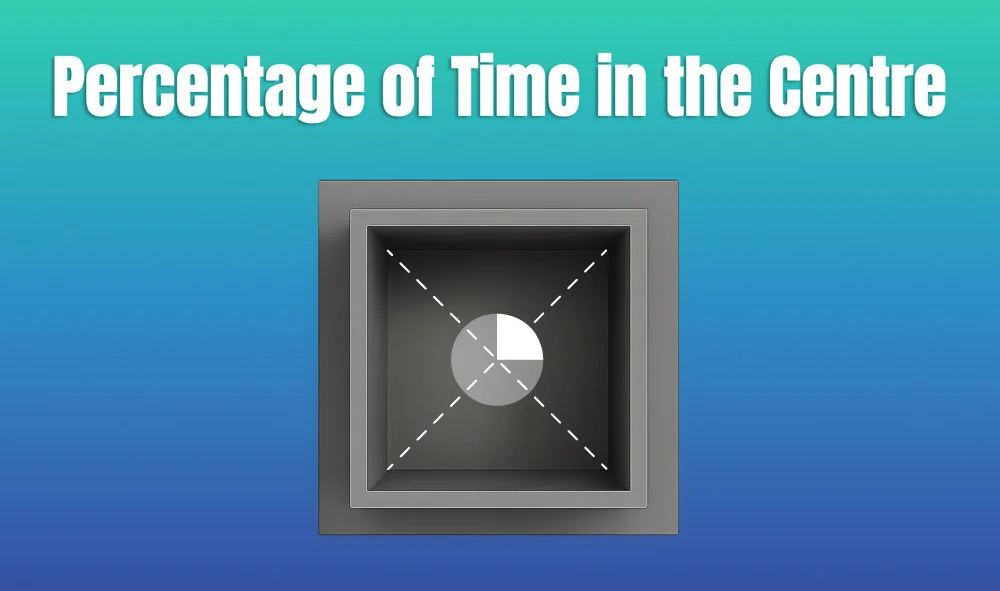
Monday – Friday
9 AM – 5 PM EST
DISCLAIMER: ConductScience and affiliate products are NOT designed for human consumption, testing, or clinical utilization. They are designed for pre-clinical utilization only. Customers purchasing apparatus for the purposes of scientific research or veterinary care affirm adherence to applicable regulatory bodies for the country in which their research or care is conducted.